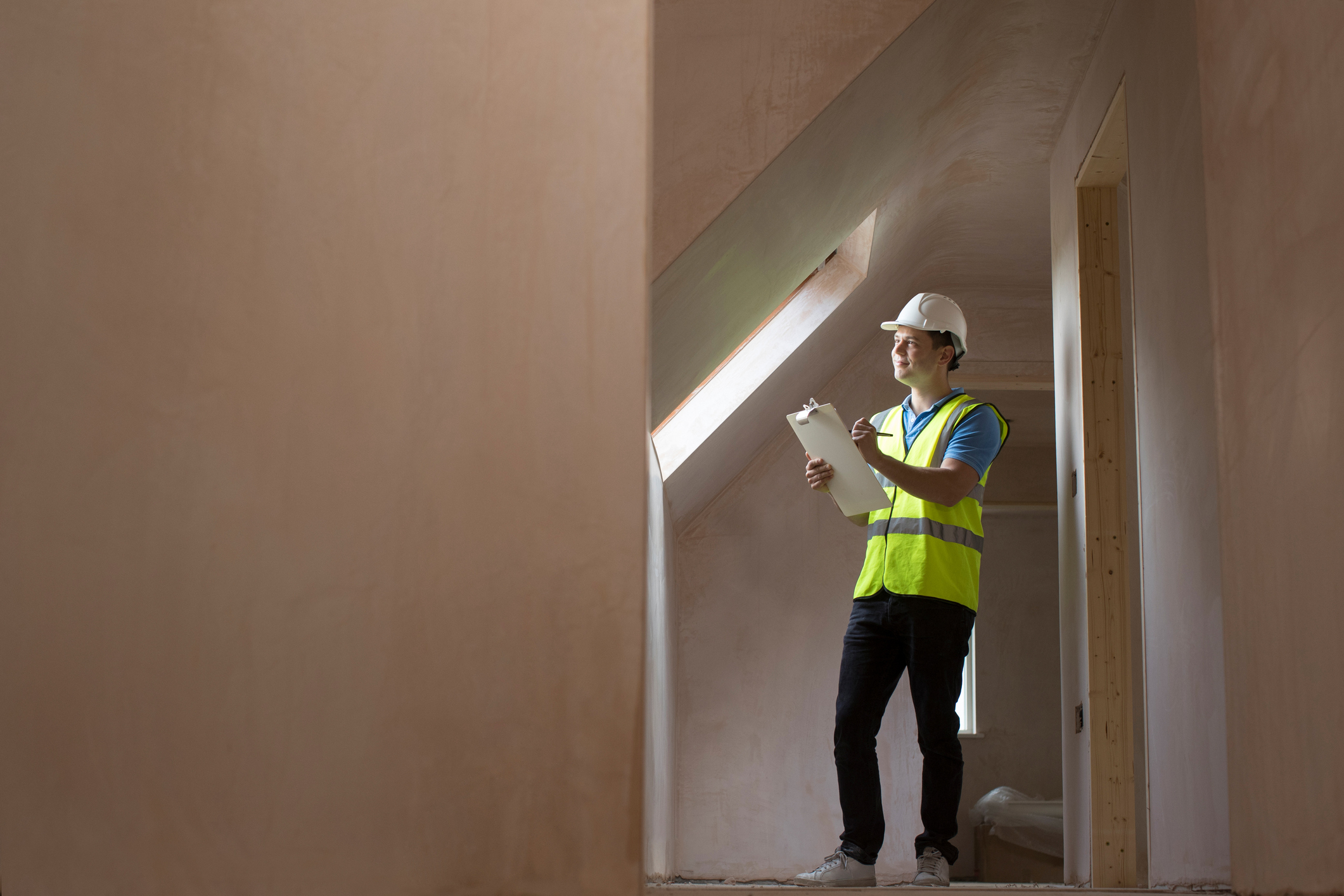Building Inspectors: What Do They Do?
Whether you are undertaking a new build, an extension or making structural alterations to your home, you will need Building Regulations approval from a building inspector

Whether you are undertaking a new build, an extension or making structural alterations to your home, you’ll need Building Regulations approval from your local building inspector.
There is sometimes confusion about the difference between planning and Building Regulations approval:
Planning approval relates to receiving planning permission from the local authority to build an extension or new dwelling.
Building Regulations approval is a completely separate process and ensures that the proposed structure will be built in full compliance with the Building Regulations.
An important part of getting approval is having the benefit of a building inspector to carry out regular site visits.
Building inspectors are professionals and have a complete working knowledge of the many regulations. Their job is to ensure that at completion the project has been built in full compliance with each of them.
Choice of Full Plans or Building Notice Application
Before any work can begin, you need to decide whether to make a ‘Full Plans’ Building Regulation application or submit a ‘Building Notice’.
With a Building Notice, it is possible to carry out the work without prior approval, but the responsibility of ensuring the work is in full compliance is entirely that of the builder.
If you choose a Full Plans application, you will know from the start that the working drawings have been checked and approved by the building inspector and that the plans fully comply with all of the Building Regulations.
These regulations are comprehensive and quite complex. A Full Plans application would need to include a set of plans that demonstrate to the building inspector that what is being proposed conforms fully to the regulations.
The other advantage of this route is that the approved drawings will show everything the builder will need to know in order to provide a fixed quotation.
What Type of Building Control Inspector Do I Need?
These days, you can choose to use either a local authority inspector from your local council and run through Local Authority Building Control (LABC), or an inspector from a government-approved private building inspection company. This is the case for new builds, as well as alterations, extensions and loft conversions. Approved inspectors are registered with the Construction Industry Council (and must re-register every five years to maintain high standards).
A building inspector appointed through LABC and an approved inspector will carry out the same duties for a self-builder. They will check plans for compliance when a full plans application is made, and carry out site inspections when requested to check work on site at various stages.
However, only an inspector from your local authority has powers of enforcement, and an approved inspector must hand the project over to the local authority if there are problems with the project that cannot be resolved informally.
Whether you choose public or private, it pays to contact your building control body early. This will give you an idea of the fees that will be involved, which will depend on several factors, including the size of your project and the number of site visits required. You could also get advice on complex aspects of your scheme.
If you require an insurance warranty on the project the work will also need to be regularly inspected by the warranty inspector. Some warranty providers also offer a private building inspection service, which can be cost-effective.
Statutory Inspections
If the Building Regs plans deviate in any way from the planning approved drawing, this needs to be addressed before any work starts.
Once the plans have been approved, they become the only ones that are used to build the project. Before starting any work, it’s a good idea to compare the approved Building Regulation plans with the original planning drawings.
Further Checks by the Building Inspector
As the job moves forward the building inspector will usually carry out additional checks:
- They may need to see the floor and ceiling joists to ensure they are in accordance with the approved drawing.
- They will want to check the size, grade and centres of the joists, together with any herringbone strutting and restraint strapping.
- All of the roof timber/trusses may be checked for correct size and grade of timbers at the correct spacing.
- They will be interested in both thermal and sound insulation to make sure it is of the correct type and thickness.
- The structural integrity of the building is very important, but equally the fire safety and glazing regulations need to be precisely adhered to.
- The staircase must conform to several important rules. If there are problems they can be expensive to put right.
If the work is being carried out by someone new to construction or who is an enthusiastic DIYer, the inspector will be able to visit the site more often if requested.
The approved plans do not always illustrate compliance to every regulation and on-site mistakes can happen.
Advice and Guidance from the Building Inspector
- If in doubt, it is easier to check a particular regulation before a job is carried out, by asking the inspector.
- To achieve the smooth running of any project and to avoid too many delays due to things being incorrect, it makes sense to keep on the right side of the inspector. They are there to help and are usually very willing to offer advice.
- Any project that has received guidance and advice from the inspector will pay dividends in the long term.
Statutory Inspections
There are usually eight statutory inspections, which have to be made during the course of construction. Generally the inspector will want to make quite a few additional visits as the work proceeds.
At least two days before any work begins, it is a statutory requirement that the building inspector is informed that the work is about to start.
The inspector will call at the site once they have been notified. This visit can be useful as he or she can meet the builder and generally check the site conditions. Once the first visit has taken place, a one-off invoice is issued to cover the cost of the first and all subsequent inspections.
With a Building Notice, there is just one full up-front payment made at the time of making the application.
The next statutory inspection is the excavation before placing the concrete foundations.
This allows the inspector to check on ground conditions and look at:
- The bearing capacity of the ground
- Proximity and depth of any drains and manholes
- Depth of the existing foundation (if it’s an extension)
- Proximity of any trees or recently removed trees
- Whether the ground is ‘made up’ (manmade)
The next inspection is the preparation of the oversite.
The inspector will determine the suitability of the hardcore, the provision of sand blinding and the damp-proof membrane (DPM). If a sub-floor thermal insulation is specified, this will also be checked.
Once the footing walls have been brought up to the damp-proof course (DPC) level this also requires a statutory inspection.
All new drainage is inspected prior to covering.
The items checked will include the suitability of materials used, the correct falls and line of the drains, materials used for the beds and surrounds of the drains and inspection chambers and access points.
Drainage testing — wherever possible the above and below ground drainage will be checked for airtightness or watertightness
When the building is occupied prior to completion, the local authority needs to be notified.
This inspection is often overlooked, but it is important that the inspector has a final walk round to check:
- Ventilation to rooms and roof voids
- Roof coverings
- Fire precautions and fire safety
- Safety glazing
- Staircase details and geometry
Get the Homebuilding & Renovating Newsletter
Bring your dream home to life with expert advice, how to guides and design inspiration. Sign up for our newsletter and get two free tickets to a Homebuilding & Renovating Show near you.
Builder Peter Eade has spent a lifetime running his own building business, specialising in project management and design

